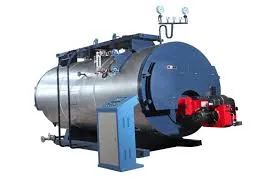
Oct . 22, 2024 09:42 Back to list
hot water boiler temp settings
Understanding Hot Water Boiler Temperature Settings
Hot water boilers are a critical component in many heating systems, providing warmth and comfort in both residential and commercial settings. One of the most important aspects of operating a hot water boiler is understanding the temperature settings, as they directly affect efficiency, safety, and overall performance.
When it comes to temperature settings, boilers typically have a range that can accommodate different heating needs. The most common temperature range for residential hot water boilers is between 120°F to 180°F (49°C to 82°C). However, the optimal temperature setting can vary based on several factors, including the type of system, the size of the space being heated, and the desired level of comfort.
Recommended Temperature Settings
For domestic hot water production, a temperature of 120°F (49°C) is often recommended. This temperature is hot enough to provide adequate hot water for tasks such as showering and washing dishes while minimizing the risk of scalding. Setting the boiler at this temperature also helps in reducing energy consumption, as maintaining higher temperatures often leads to excess energy use.
On the other hand, if the boiler is primarily serving a heating system, such as radiators or underfloor heating, it may operate at higher temperatures. Settings between 160°F to 180°F (71°C to 82°C) are common for these applications to ensure that enough heat is delivered efficiently throughout the space.
Factors Influencing Temperature Settings
Several factors play a role in determining the most appropriate temperature settings for a hot water boiler
hot water boiler temp settings

1. System Type Different heating systems have varying optimal temperature settings. For instance, traditional radiators need higher temperatures to warm a room effectively, while modern low-temperature systems, like underfloor heating, operate efficiently at lower settings.
2. Insulation and Home Efficiency Homes with good insulation may tolerate lower boiler temperatures, as they lose less heat. Conversely, older homes with poor insulation may require higher temperatures to achieve the desired indoor climate.
3. Local Climate In colder regions, higher temperature settings may be necessary to keep indoor spaces comfortable during harsh winters.
Safety Considerations
Safety is paramount when setting the temperature for a hot water boiler. The risk of scalding increases with higher temperatures, especially in households with children and elderly individuals. It's crucial to balance comfort and safety, ensuring that the temperature settings do not exceed safe levels.
To enhance safety, many modern boilers come equipped with thermostats and safety mechanisms that prevent overheating. Regular maintenance of the boiler system is also essential to ensure optimal performance and safety.
Conclusion
In conclusion, understanding and properly adjusting the temperature settings on a hot water boiler is vital for achieving energy efficiency, comfort, and safety. By considering the type of system, insulation quality, and local climate, homeowners can determine the most suitable settings. Regular monitoring and maintenance will further ensure that the boiler operates effectively and safely, providing reliable hot water and heating when needed. Proper settings not only enhance comfort but also significantly contribute to energy savings and reduced utility bills.
-
High-Efficiency Commercial Oil Fired Steam Boiler for Industry
NewsJul.30,2025
-
High-Efficiency Biomass Fired Thermal Oil Boiler Solutions
NewsJul.30,2025
-
High Efficiency Gas Fired Thermal Oil Boiler for Industrial Heating
NewsJul.29,2025
-
High-Efficiency Gas Fired Hot Water Boiler for Sale – Reliable & Affordable
NewsJul.29,2025
-
High Efficiency Biomass Fired Hot Water Boiler for Industrial and Commercial Use
NewsJul.29,2025
-
High-Efficiency Biomass Fired Hot Water Boiler for Industrial Use
NewsJul.28,2025
Related PRODUCTS






















